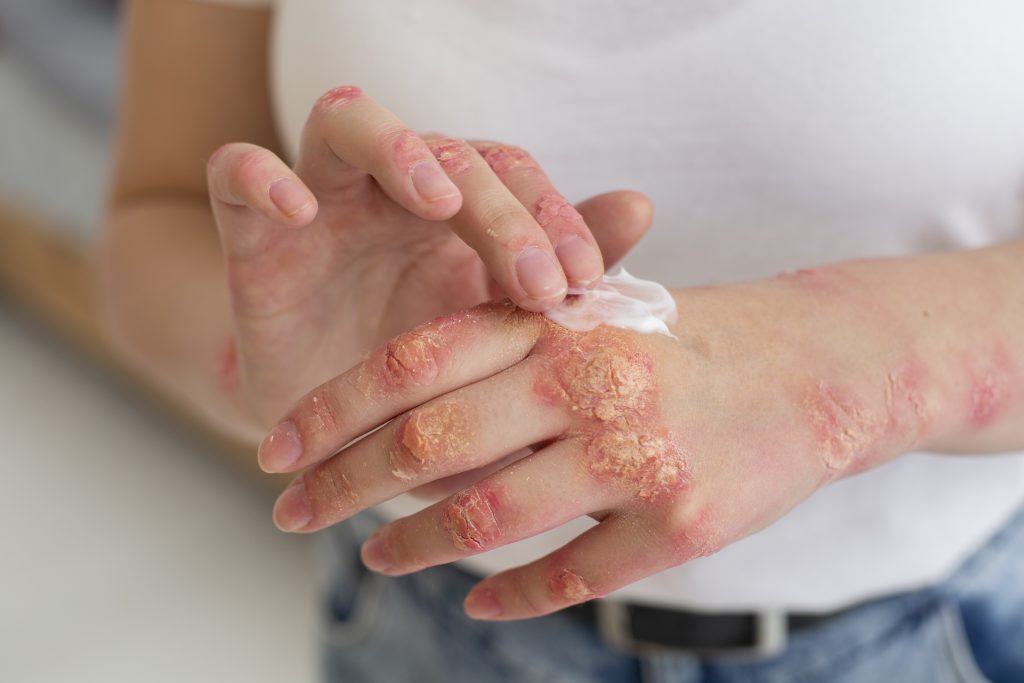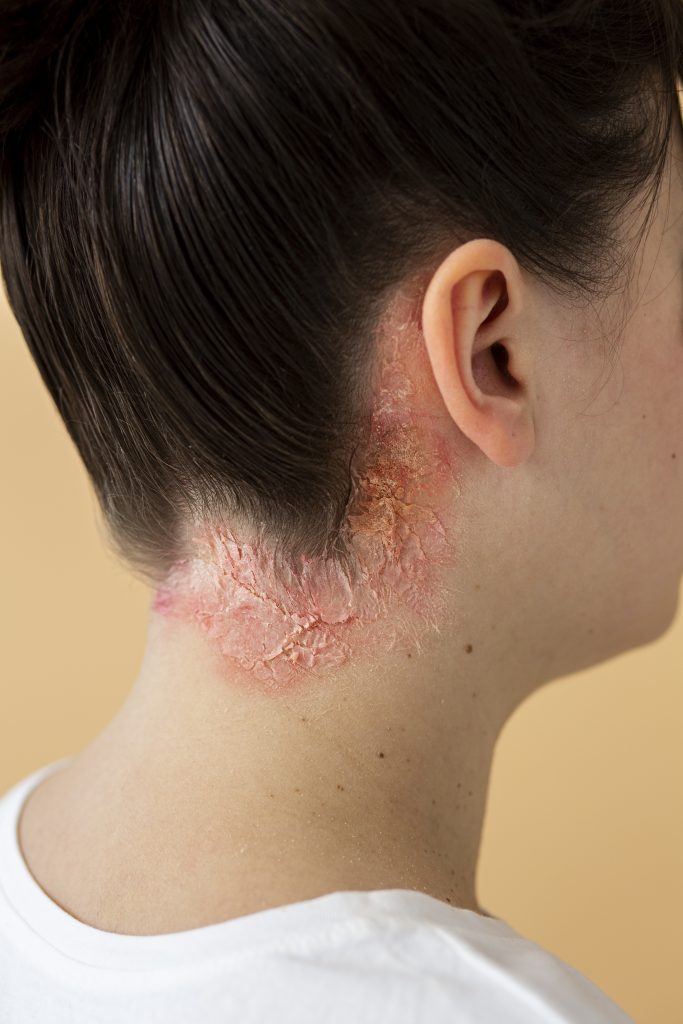
Introduction.
Seborrheic dermatitis is a major skin problem that happens due to flaky skin, patches, and dandruff. This problem can be seen on oily areas like the scalp, chest, cheeks, and back. No doubt, it is a form of eczema; seborrheic dermatitis tends to persist for long periods, but we need to treat and manage it well.

A researcher and dermatologist may find out its basic reason and cause, but according to skin research, these main factors can be seen very clearly.
If a person has this issue, first we may see his family hierarchy, whether anyone in his forefather was suffering from this disease, and if yes, then this person got this from his hormones. So it’s better to treat this disease in a good way to stop it from reaching the next generation.
2. Redundancy of Oil.
Overproduction of oil causes redness, itching, and scaly patches.
2. Malassezia Yeast:
It is found in oily skin naturally. When this yeast grows too much, it can cause inflammation and increase oil production, making seborrheic dermatitis worse.In babies, this condition is called cradle cap. It usually appears soon after birth and goes away on its own in a few months. In adults, seborrheic dermatitis can also be linked to other skin issues, like psoriasis.
It may be thought why one person gets this disease while another does not. It’s not fully understandable, but there are many factors that can be seen clearly.
Major Factors.
Stress
Systems may occur in different situations and natures, but some natural symptoms are discussed here.

Home Remedies.
Dermatologists mostly recommend home remedies before starting any medication. Home remedies initiatives may be followed
If symptoms persist, medical treatments may be necessary.
Dry Scalp and Dandruff solution. See also here
Go to the doctor if;
For babies, reach out to a pediatrician if the swing cap isn’t better or becomes bad. Sometimes, recommended shampoos or lotions might be essential.
What Can Be Mistaken for Seborrheic Dermatitis?
Seborrheic dermatitis can look similar to a few other skin conditions, such as:
Seborrheic dermatitis is a permanent situation that often needs ongoing care. While many people experience long stretches with little or no signs, flare-ups can still occur. By sticking to an ongoing treatment routine and identifying triggers, most people can keep the condition under control and minimize its impact on daily life.
Creating a skincare routine that works for you and collaborating with a doctor to find the best treatment plan can help manage seborrheic dermatitis without leading to more serious health issues.
Conclusion.
Seborrheic dermatitis is a chronic but manageable condition, with flare-ups that can be controlled through consistent treatment and trigger management. By following a personalized skincare routine and consulting with a doctor, most people can minimize symptoms and maintain a good quality of life. With the right care, seborrheic dermatitis doesn’t lead to serious health issues.
For any Kind of Skincare problem, you Must Visit us
No comments yet. Be the first to comment!

Recent Comments